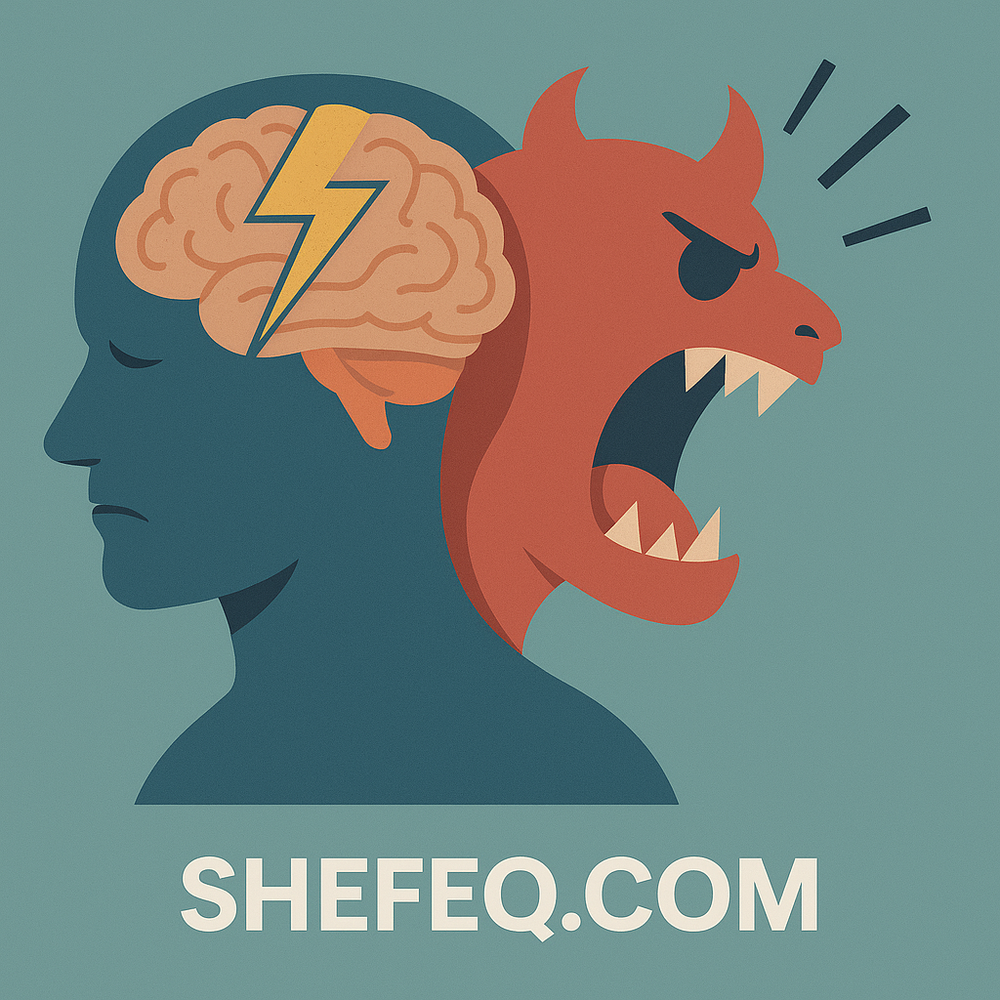I. Introduction: Is It Fear or the Fear of Living?
Everything appears normal. There's no apparent danger, life goes on, people are conversing, yet you find yourself... unable to breathe. It's as if a storm rages within you, unseen by others. Your hands tremble, your heart races, you feel suffocated, and thoughts of impending doom flood your mind. Yet, medical examinations reveal nothing physically wrong.
This is anxiety, and in its most acute form, a panic attack.
This article aims to provide not only scientific terminology but also human explanations, shared experiences, manifestations in daily life, and potential coping strategies.
II. What Is Anxiety?
Anxiety is the body's and mind's response to perceived future threats or uncertainties, preparing for potential danger even in the absence of a real threat.
Common Symptoms:
-
Persistent worry and unease
-
Shortness of breath
-
Heart palpitations
-
Uncontrolled stream of thoughts
-
A sense of impending doom
-
Muscle tension
-
Gastrointestinal disturbances
III. What Is a Panic Attack?
A panic attack is a sudden, intense episode of fear or discomfort that peaks within minutes, often without an obvious trigger.
Duration: Typically lasts between 10 to 30 minutes, but its effects can linger for hours.
Symptoms:
-
Feeling of choking or suffocation
-
Fear of dying
-
Fear of losing control or "going crazy"
-
Detachment from reality (depersonalization)
-
Sweating, trembling, chest tightness
IV. The Origin of Anxiety: The Brain's Fear Mechanism
The amygdala, a part of the brain, plays a central role in processing fear and triggering the "fight or flight" response. In individuals with anxiety disorders, this mechanism can become hyperactive, responding to non-threatening stimuli as if they were dangerous.
Process:
-
The brain perceives a threat.
-
Stress hormones like cortisol and adrenaline are released.
-
Physical symptoms such as increased heart rate and rapid breathing occur.
-
A cycle of panic ensues.
V. Why Does Anxiety Occur?
-
Trauma: Past traumatic experiences, especially during childhood.
-
Genetic Predisposition: Family history of anxiety disorders.
-
Neurological Factors: Dysregulation in brain areas responsible for fear responses.
-
Personality Traits: Perfectionism, high sensitivity, or a need for control.
-
Biochemical Factors: Imbalances in neurotransmitters like serotonin and dopamine.
VI. Forms of Anxiety
-
Generalized Anxiety Disorder (GAD): Chronic, excessive worry without a specific cause.
-
Social Anxiety Disorder: Intense fear of social situations and being judged.
-
Panic Disorder: Recurrent panic attacks and fear of future attacks.
-
Phobias: Irrational fear of specific objects or situations.
-
Post-Traumatic Stress Disorder (PTSD): Persistent anxiety following a traumatic event.
VII. Real-Life Example: "I Thought I Was Dying"
Consider the story of a 32-year-old woman who experiences sudden breathlessness and heart palpitations while commuting. Medical tests show no physical issues. Eventually, she learns that these episodes are panic attacks, manifestations of unexpressed fears and stress accumulated over the years.
VIII. Panic Attacks and the Fear of Death
The most challenging aspect is the overwhelming fear of dying. However, in reality, panic attacks:
-
Are not life-threatening
-
Do not cause physical harm
-
Are not indicative of a heart attack or mental breakdown
-
Are misfires in the brain's threat detection system
IX. Challenging Anxious Thoughts
| Anxious Thought | Reality |
|---|---|
| "I'm going to get sick." | Your health is stable. |
| "People will judge me." | Most people are focused on themselves. |
| "They will abandon me." | This is a fear, not a certainty. |
| "I can't handle this." | You've managed before; you can again. |
X. Coping Strategies – Managing Anxiety
-
Psychotherapy:
-
Cognitive Behavioral Therapy (CBT): Alters negative thought patterns.
-
Eye Movement Desensitization and Reprocessing (EMDR): Addresses trauma.
-
-
Medication:
-
Selective Serotonin Reuptake Inhibitors (SSRIs): Adjust serotonin levels.
-
Anxiolytics: Short-term relief for acute anxiety episodes.
-
-
Mindfulness and Breathing Techniques:
-
Daily breathing exercises
-
Mindfulness meditation to stay present
-
-
Physical Activity:
-
Regular exercise like walking, yoga, or swimming
-
-
Support Groups:
-
Sharing experiences with others facing similar challenges
-
XI. Becoming Your Own Psychologist: Internal Dialogues
Ask yourself:
-
"Is there evidence supporting this fear?"
-
"Will this feeling pass?" (Yes!)
-
"Have I overcome this before?" (Yes!)
XII. Social Impacts of Anxiety
-
Strained relationships
-
Workplace difficulties
-
Social withdrawal
-
Decreased self-confidence
However, self-awareness and proactive management can transform anxiety into a path for personal growth.
XIII. Conclusion: Fear Can Be Deceptive
Anxiety and panic attacks are the brain's attempts to protect you, but they can become overprotective, limiting your life. Recognizing this allows you to regain control.
By understanding and confronting your fears, your body can find calm. The brain's alarm system quiets, and the cycle of panic can be broken.
Reflection:
-
Have you ever experienced a panic attack?
-
What are your deepest fears?
-
What is your body trying to communicate to you?

